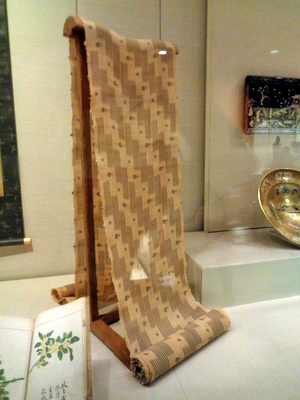Bashofu
- Japanese/Okinawan: 芭蕉布 (bashoufu / baasaa)
Bashôfu, or baasaa in Okinawan, is cloth made from the fibers of a particular type of banana plant. The ito bashô, or "thread banana," as it is called, is different from the type which produces edible fruit, and while the plant is not originally indigenous to the Ryukyus, and even today grows only in areas of human habitation, bashôfu cloth is nevertheless unique to Ryukyuan culture; it is not produced or used in other cultures, e.g. in Southeast Asia.
A somewhat coarse fabric, bashôfu is nevertheless used in the Ryukyus for a wide variety of purposes, from robes to underwear, and was worn by people of all social classes, including even kings.
The earliest extant mention of bashôfu is in a 1546 account written by Koreans shipwrecked in the Ryukyus, who also describe how it is made - a process that has remained largely unchanged, at least in certain parts of the Ryukyus, among certain lineages of weavers, down to the present day. The banana fabric is not mentioned as a tribute good, however, until over forty years later, in 1587.
The material is central enough to Okinawan culture that song called "Bashôfu" is among the most well-known and popular folk songs today.
References
- Stinchecum, Amanda Mayer. "Textiles of Okinawa." in Beyond the Tanabata Bridge: Traditional Japanese Textiles. Seattle Art Museum, 1993. pp78-79.
